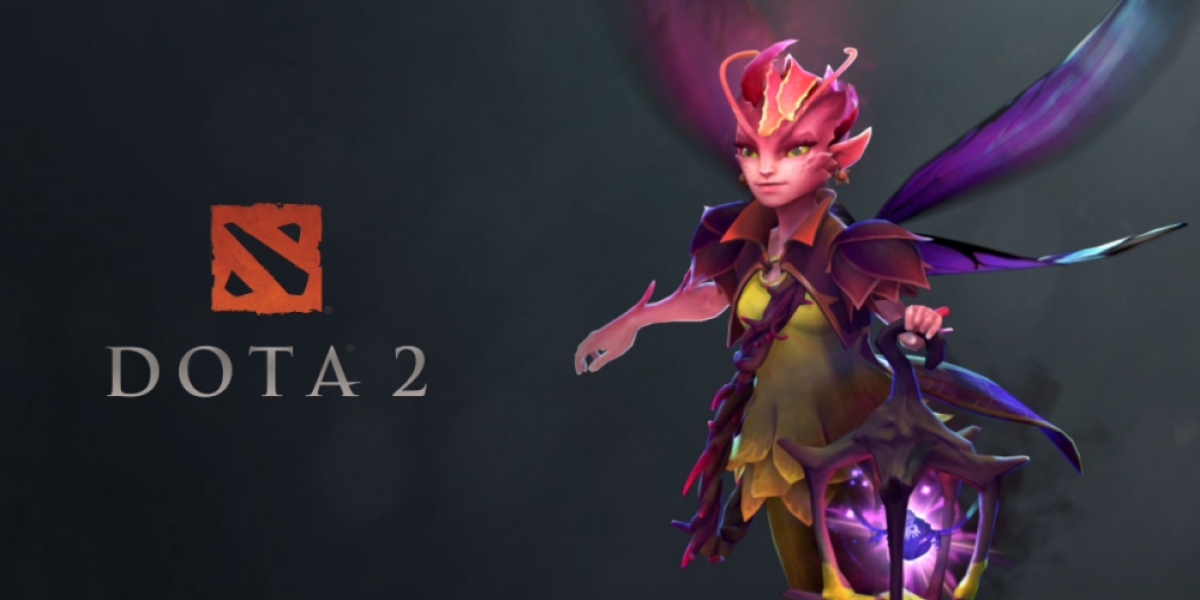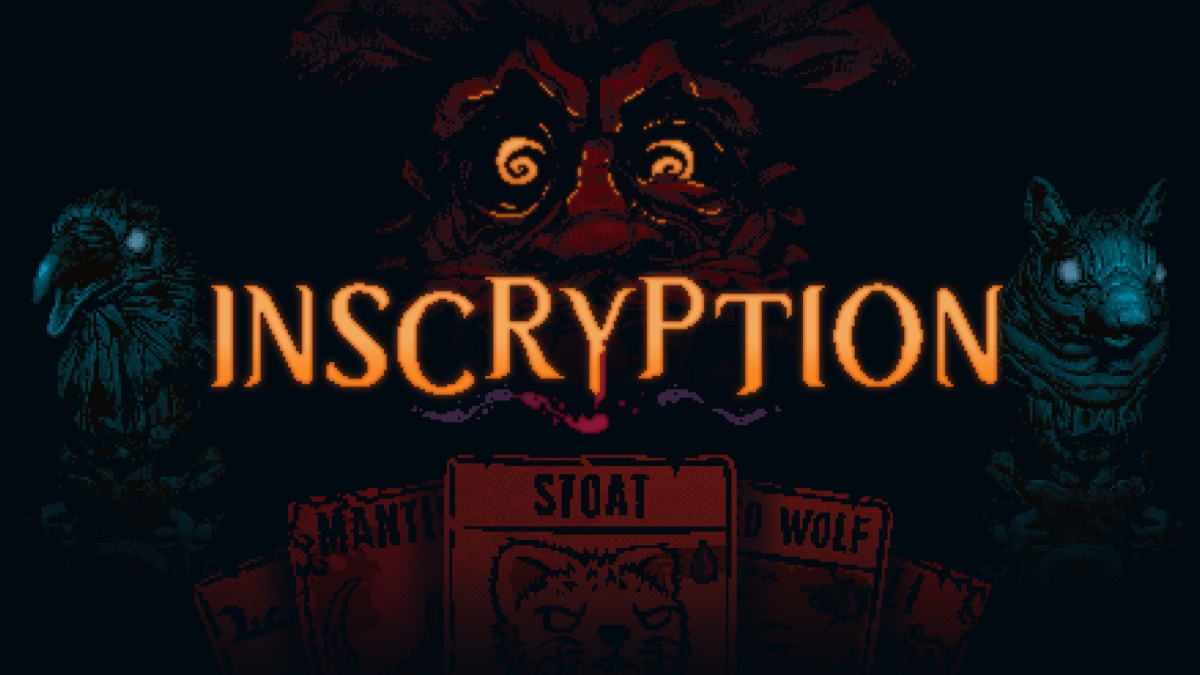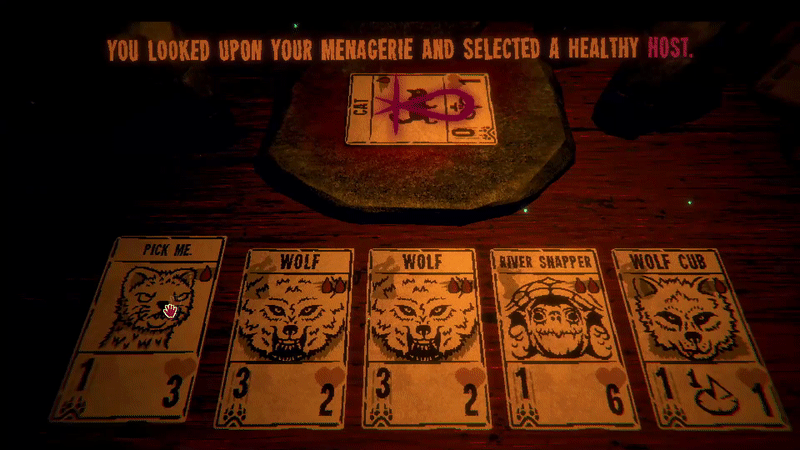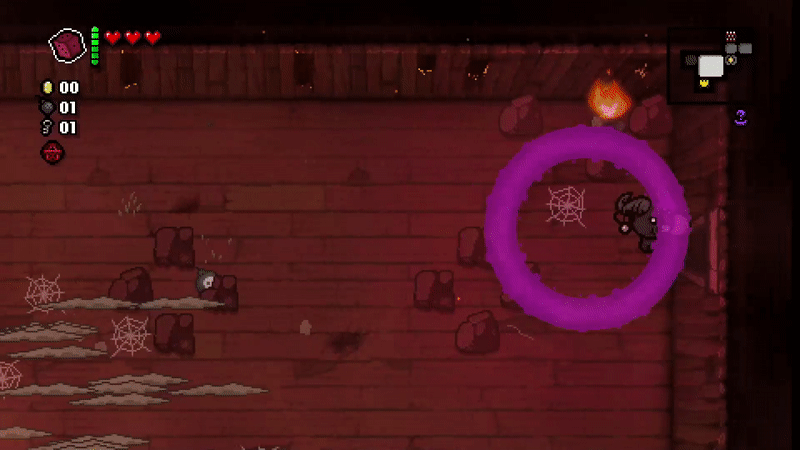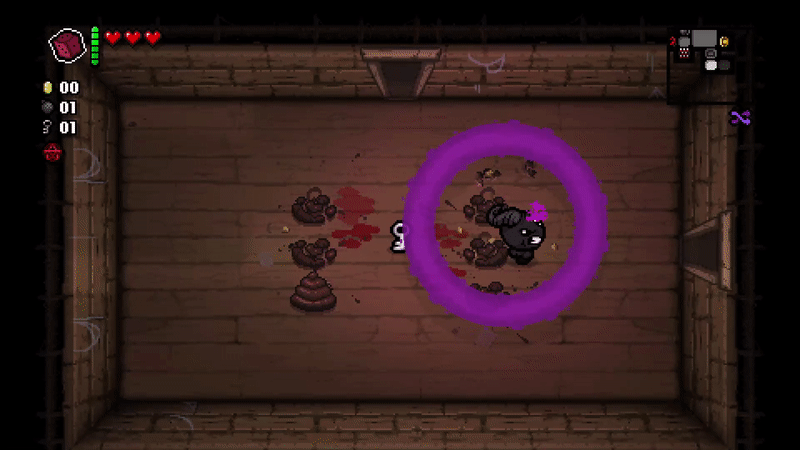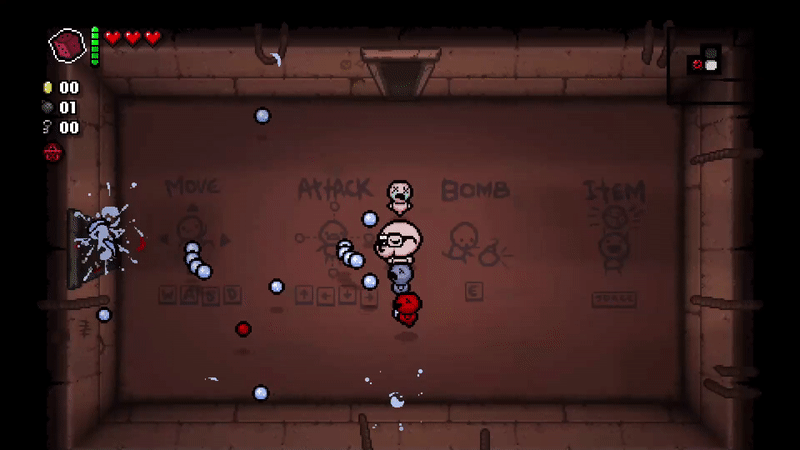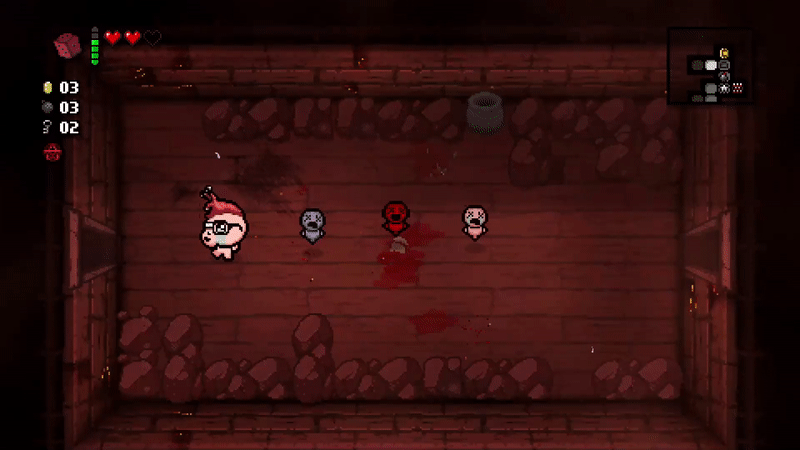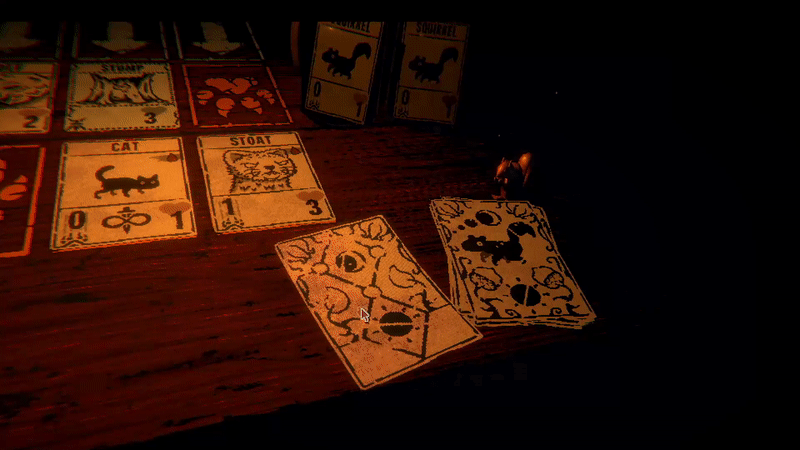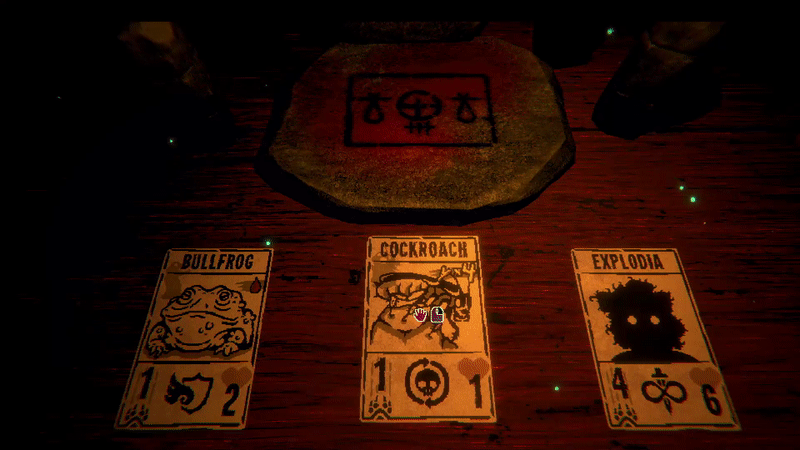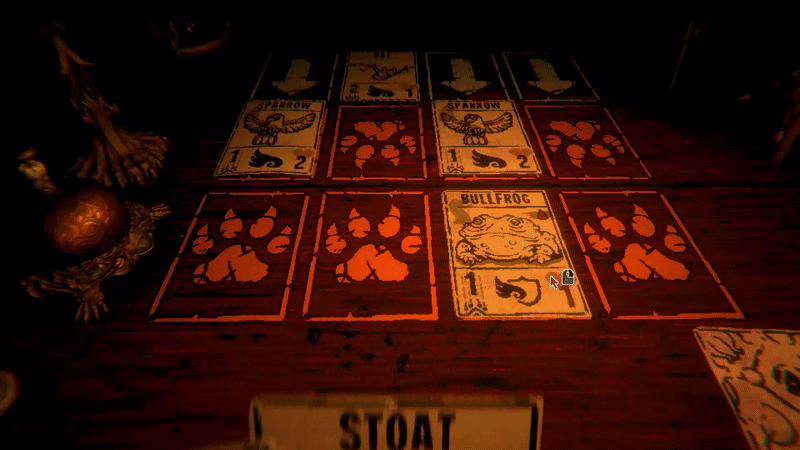Dota 2 is a game of the genre MOBA, Multiplayer Online Battle Arena. In simpler terms, it’s a team-based game with a focus on combat and strategy. It’s played from a bird’s eye view, and features a number of colorful fantasy heroes to choose from. Dark Willow, the mischievous, slightly sadistic thieving fairy is my personal favorite, and I wanted to just jot down my thoughts on how effectively her abilities are communicated through audio-visual feedback.
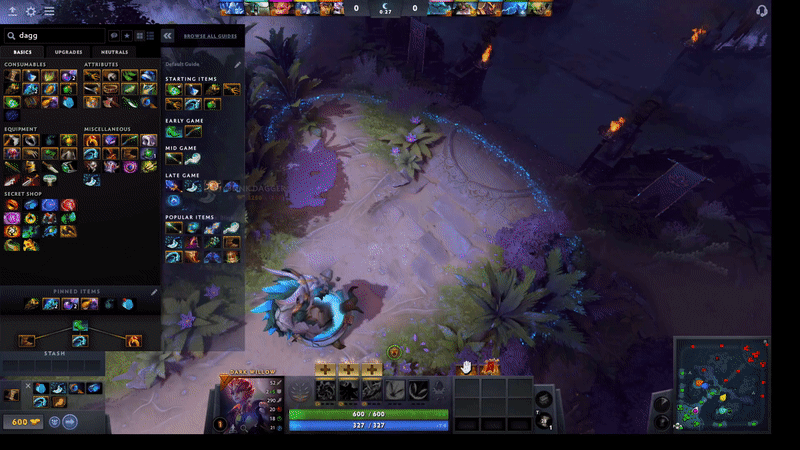
Audio-visual feedback is as it sounds; the fairly basic concept that important information should be communicated to players implicitly through their senses, and that things like affirmations of success or confirmations of failure should be communicated in this way. For example, if a player character swings a sword, that sword swing should make a distinctly different sound whether it misses its target, strikes an enemy, or strikes a wall. It should probably look distinctly different in each of those cases as well.
Dark Willow has five abilities. Bramble Maze allows her to sprout a circle full of equally spaced bramble bushes at a distant location. Enemies will have only a narrow space to squeeze between the brambles, and if they touch one they are rooted to the spot and damaged. Shadow Realm allows Dark Willow to hide in a shadow form, immune to most attacks, then burst out with a powerful shadow attack. The longer she is hiding, the stronger the attack, so long as the ability does not wear off first. Shadow Realm can later be upgraded to fire a barrage of shadow attacks. Cursed Crown is a curse Dark Willow places on a target, causing it and nearby allies to be stunned exactly four seconds after the curse is cast. Bedlam causes Dark Willow’s wisp minion to orbit her, firing destructive magic at nearby enemies. Terrorize projects the wisp to a distant location, causing any enemies at that location to be terrified and sent running toward their base.
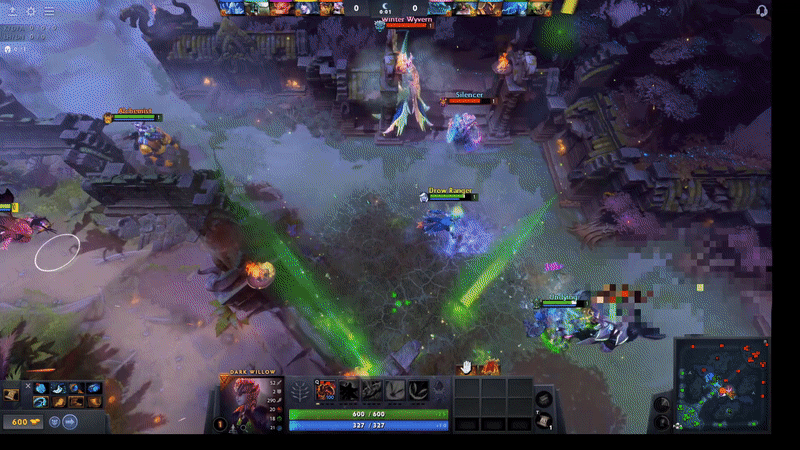
A lot of Dark Willow’s power as a hero comes from the synergy between her various ability mechanics. Bramble maze does a great deal of damage and holds foes in place, but they have to touch the brambles for this to happen. Luckily, Dark Willow has the ability to force enemy movement in the form of Terrorize, clever of use of which can cause enemies to flee in terror into her brambles. Cursed Crown is a strong stun that can disable multiple opponents but only if they are standing together, which is why Terrorize, in conjunction with Bramble Maze, is so effective at sticking enemies together. Dark Willow can dish out immense damage with Bedlam, but only if she gets close, and she is not very durable herself. Luckily, Shadow Realm renders her immune to most dangers, which she can use in conjunction with Bedlam. The fact that Shadow Realm can cap off this combo with a burst of damage is a nice compliment to the more sustained damage of Bedlam, which can be more easily reacted to.
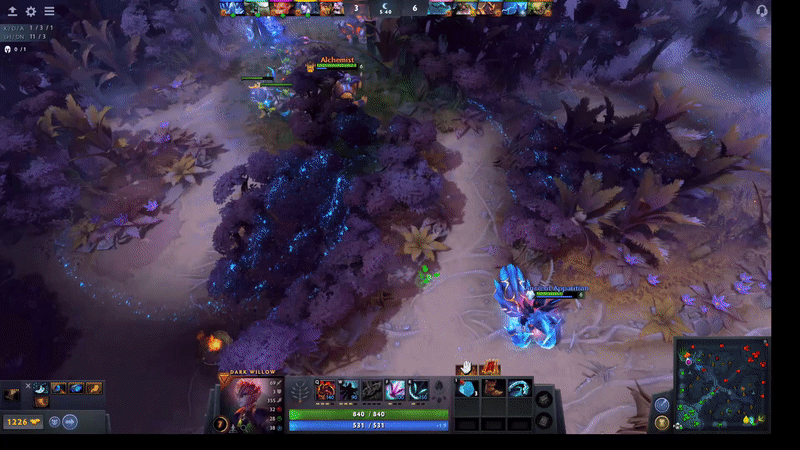
Because it is so important to coordinate your various abilities together like this, it is essential the player can develop a seamless feel for how the various timings, cast ranges, and nuances of her abilities work, without having to look at a detailed explanation. That’s where audio-visual feedback is essential for making gameplay mechanics like this synergize in an effective way that’s satisfying and fun for the player. Dark Willow’s Shadow Realm is an excellent example of this.
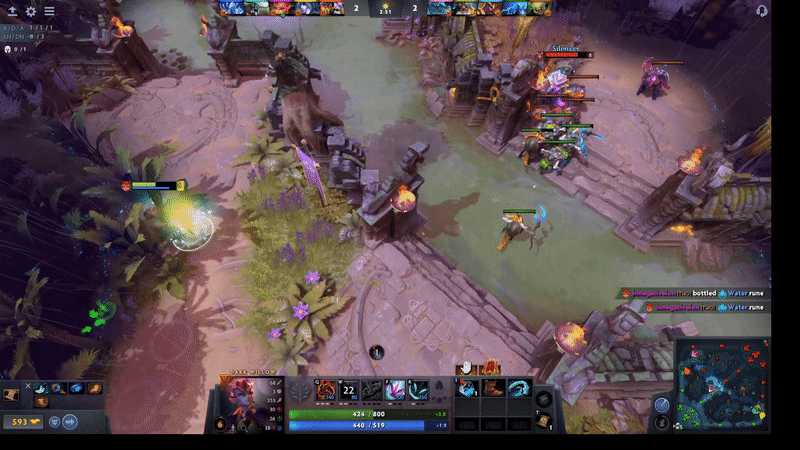
First off, Shadow Realm is kind of a complicated ability when you break it down. When its button is pressed, Dark Willow becomes subsumed in shadow and immune to most enemy attacks, which is easy enough to understand. However, during this period Dark Willow is also charging up an attack. This shadow attack reaches the peak of its potency after 3.5 seconds of charging, but the ability itself ends after 5 seconds. So there is a period of 1.5 seconds in which it is optimal to use Shadow Realm’s attack competent. That’s a little unintuitive, or rather it would be if not for the audio and visual considerations. After 3.5 seconds of Shadow Realm, Dark Willow is surrounded by an additional visual effect: a red circular aura that surrounds her and gives the impression of peak power. As soon as Shadow Realm begins, a distinct and almost melodic humming sound begins to emanate from Dark Willow, it gives a sense of building power and changes over time. Its intensity crescendos after exactly, you guessed it, 3.5 seconds. The humming then peters out for the remaining 1.5 seconds, giving a strong impression of when the attack should be dealt.
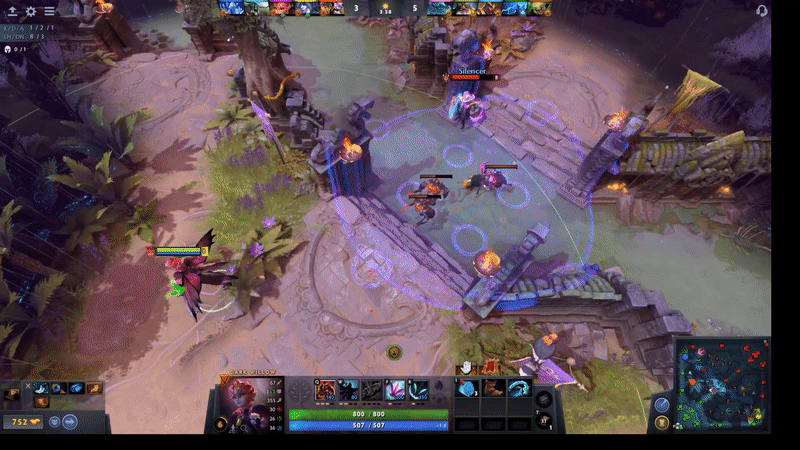
This sort of feedback is also helpful for those opposing Dark Willow. Without having to count, any player can get a pretty good idea of when Dark Willow is most likely to release her shadow attack. Giving easy access to this sort of information is conducive to a healthy competitive game, allowing complex strategies to form. Knowing what your opponent is capable of, if not necessarily what they intend to do, you can act and react to game events as they occur. Acting and reacting is the core of competitive gameplay. If each player doesn’t have the right information to available for them to utilize, there is no counterplay, there is no game.
Curse Crown is a very interesting example of this concept. It counts down, loudly and with a visual timer represented by four icons for each of the four seconds in the countdown, but this countdown is a strategic benefit to both Dark Willow and her victim. The victim will know that standing near allies when the countdown pops means putting those allies in danger. Dark Willow will be eagerly awaiting for her victim to become stunned and helpless, so she can unleash her most powerful offense. The strong visual feedback makes for a better experience for both the victim and user of the spell. By giving both parties this important information as a readily apparent graphic and audio cue, they can both formulate plans to deal with the respective obstacles to their goals, which is itself the fun of the game.
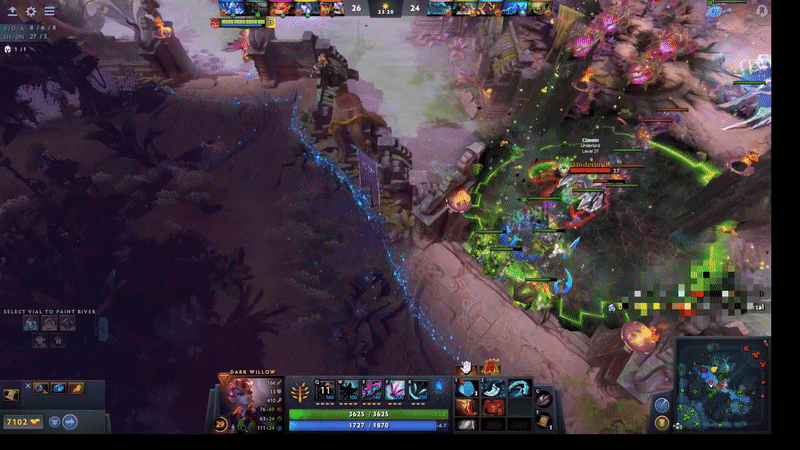
As the victim is stunned, Dark Willow may try to line up a Bramble Maze on them, to further damage and disable them. Typically, you’d want to place the brambles in the enemy’s path, so they move into the bush themselves. If they are stuck in place though, one can carefully line up the bramble to appear beneath your target’s feet, thanks to a convenient target-preview interface that will shadow the Dark Willow player where exactly they brambles are going to appear. For the opponent’s part, the brambles are distinctly shaped, leaving little ambiguity as to where it is and is not safe to walk.
As you may have gleaned, Dota 2 can become fairly visually loud, with ten individual heroes all throwing out impressive and explosive spells like this. That’s why it’s so important to keep a distinct visual not only for each ability, but a distinct visual style for each hero as well. It should be unambiguous when it is Dark Willow in particular using her spells, so that enemies and allies have a fair amount of information with which to react. Dark willow’s visual effects are uniformly composed of dark violets and maroons, evocative of shadowy undergrowth and wild flowers, which is also thematically relevant to her character as a dark fairy. Big and important abilities that can completely shift the tide of battle, such as Terrorize, tend to be louder and more immediately noticeable, in proportion to their power.

Audio-Visual Feedback is one of those things you really have to nail, if you’re game’s to be any good, honestly. If a lot of important information is moving around in your game and it doesn’t reach the player in a prompt and unintrustive way, it can severely hamper the experience. Dota 2 is pretty good at it, considering all the challenges of keeping things clear and readable that comes with the MOBA genre. Dark Willow is a particularly strong example, and perhaps that’s one of the reasons I was drawn to her and her playstyle.
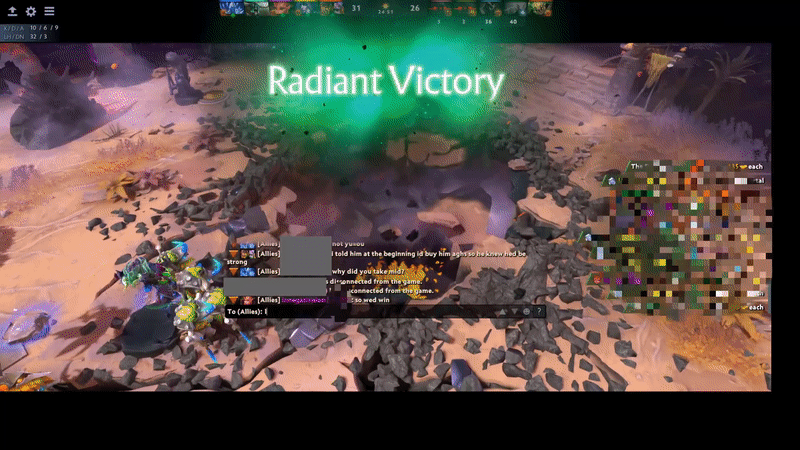
You thought you were winnin’?
